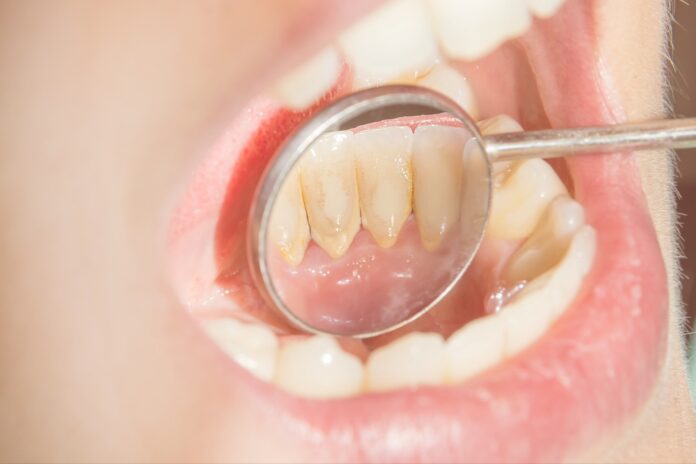The term “calculus bridge,” often linked to oral health, brings attention to a frequent dental issue that can result in various problems if not addressed. This occurrence, also known as a tartar bridge, arises from the buildup and solidification of dental plaque on the tooth surface.
This piece explores the details of how a calculus bridge forms, its effects on oral well-being, and the methods to prevent and treat it to maintain good oral hygiene. Grasping this condition is vital for ensuring proper dental care and averting possible complications.
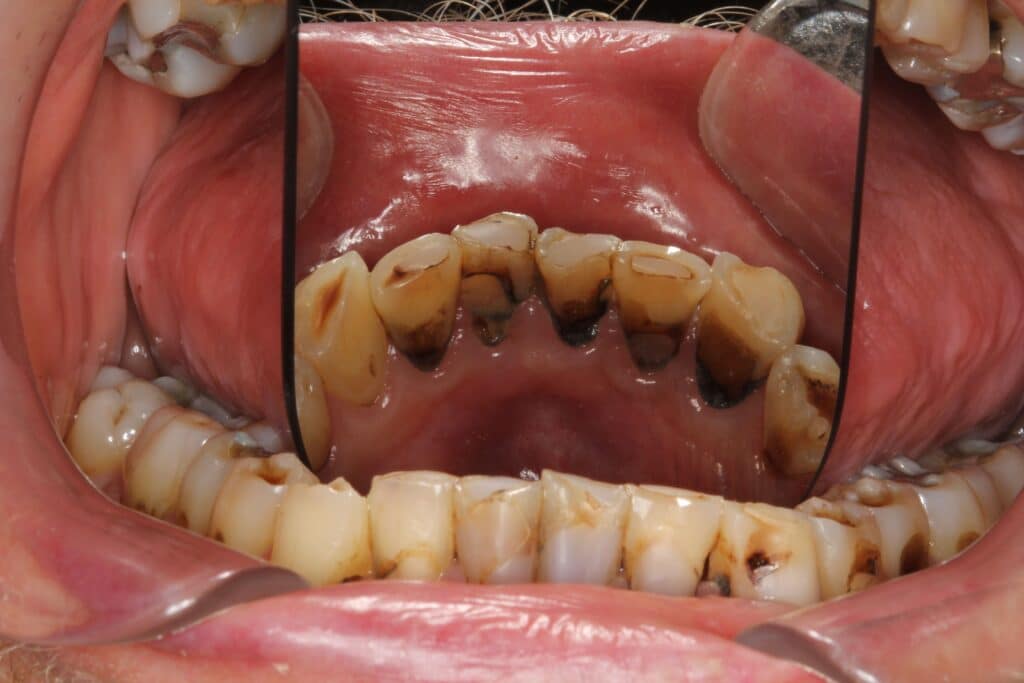
SEE ALSO: 10 Best Private Hospitals in Lagos
What is Calculus Bridge?
Calculus Bridge is an accumulation of oral debris that grows out of control. It can also be an overgrowth of dental calculus, or tartar, across multiple teeth. Plaque in the mouth, if not removed, can form into a thicker, darker substance on the teeth and along the gumline.
Excessive calculus in the mouth causes gum disease, tooth decay, chronic bad breath, or halitosis. If you’re experiencing this issue, it’s essential to consult a dentist for proper guidance and treatment.
And dental procedures, such as scaling and root planing, can remove the calculus. Along with regular checkups, good oral hygiene prevents calculus bridges from forming.
Calculus is also called tartar, a yellow or white buildup on your teeth because of hardening plaque. Since your teeth always have saliva, this buildup can happen in just a few weeks. Research says it can start forming 1 to 14 days after the plaque begins.
Plaque forms at first because of saliva, and then it turns into calculus because of the accumulation of minerals present in the calculus. This calculus often shows up on the anterior teeth and sometimes on the upper molar teeth. This is because the saliva glands are located close to those teeth.
READ ALSO: Snake Eyes Piercing (2023)
What Causes Calculus Bridge?
A calculus bridge, also known as a tartar bridge, is caused by the accumulation and hardening of dental plaque on the surface of teeth. Plaque is a sticky film of bacteria that forms on teeth due to the interaction of food particles and bacteria in the mouth.
If this plaque is not removed through regular brushing and flossing, it can mineralize and harden into calculus (tartar).
Calculus bridge formation occurs when this hardened calculus builds up and connects adjacent teeth, creating a bridge-like structure. The process involves the gradual buildup of minerals from saliva and other oral fluids, which can cement the plaque onto the teeth and contribute to forming this bridge.
This accumulation can lead to various dental issues, including gum inflammation, tooth decay, and bad breath. Regular dental hygiene practices, such as brushing, flossing, and professional dental cleanings, are essential to prevent the formation of calculus bridges and maintain oral health.
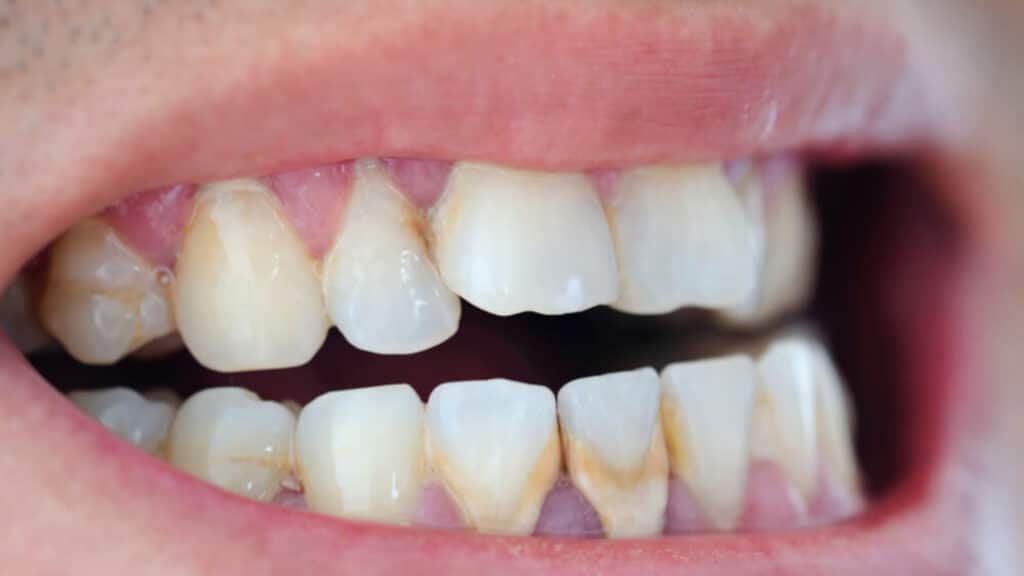
Causes of Calculus Bridge
Several factors can increase your risk of developing a calculus bridge, including:
- Poor oral hygiene
- Crooked or crowded teeth
- Smoking
Additionally, individuals (especially those who are older) taking certain medications, such as those for high blood pressure, depression, and bladder-control issues, may deal with a specific side effect known as dry mouth.
Because saliva is a crucial component of oral health, individuals living with dry mouth may be more at risk for issues like calculus build-up and tooth decay.
Because calculus cannot be removed by brushing alone, allowing too much time between dental visits can also increase the risk of a calculus bridge. The more opportunity your dentist has to clean your teeth, the less calculus you will have. The less calculus you have, the less possibility for a calculus bridge to form.
SEE ALSO: Best Teeth Whitening Kits In Nigeria
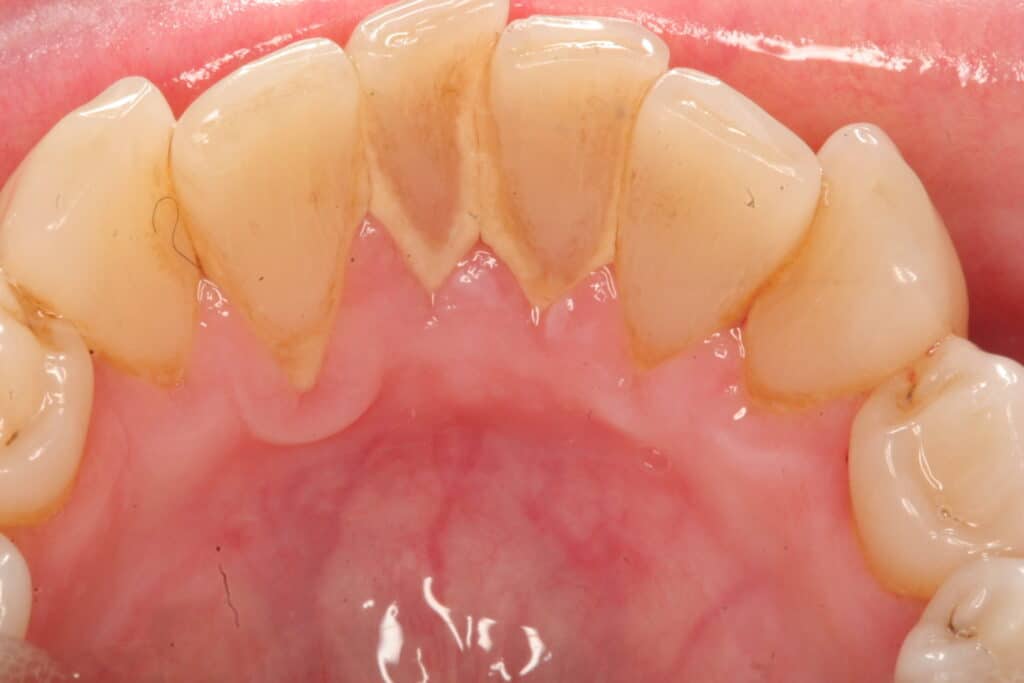
Side Effects of Calculus Bridge
A solid layer of calculus on your teeth may have a noticeable appearance. A dental calculus bridge can also lead to these conditions:
- Halitosis
Persistent bad breath, also referred to as halitosis, is a frequent indication of the buildup of calculus. Unlike the usual “morning breath” or the breath after consuming specific foods, halitosis doesn’t go away even if you brush your teeth, use mouthwash, or have mints. Halitosis could result in periodontal disease, which is a more severe type of gum disease.
- Gingivitis
Your gums might turn red or swollen. You might realize this when you see a bit of bleeding while brushing or flossing. If not taken care of, it can develop into a more severe gum disease known as periodontitis.
- Receding gums
Receding gums are also a type of periodontal disease. Your gums may begin to recede from your teeth, exposing more of your teeth and allowing bacteria to creep into the gaps between your gums and your teeth.
- Cavities
The tartar that builds up on your teeth can shield bacteria from your toothbrush. Plaque and tartar can also cause tiny holes to form in the enamel on your teeth, allowing bacteria and acid to seep down into the tooth and cause cavities to develop.
- Tooth loss
The bacteria in calculus feed on the sugars in the mouth, emitting acids as a byproduct. This creates an acidic environment that breaks down tooth enamel, leading to cavities. Cavities cause pain, sensitivity, infection, and tooth loss if allowed to progress.
If dental calculus goes untreated, it can cause gum disease, eventually leading to the loss of one or more teeth.
SEE ALSO: 8 Morning Habits Guaranteed To Change Your Life For Good
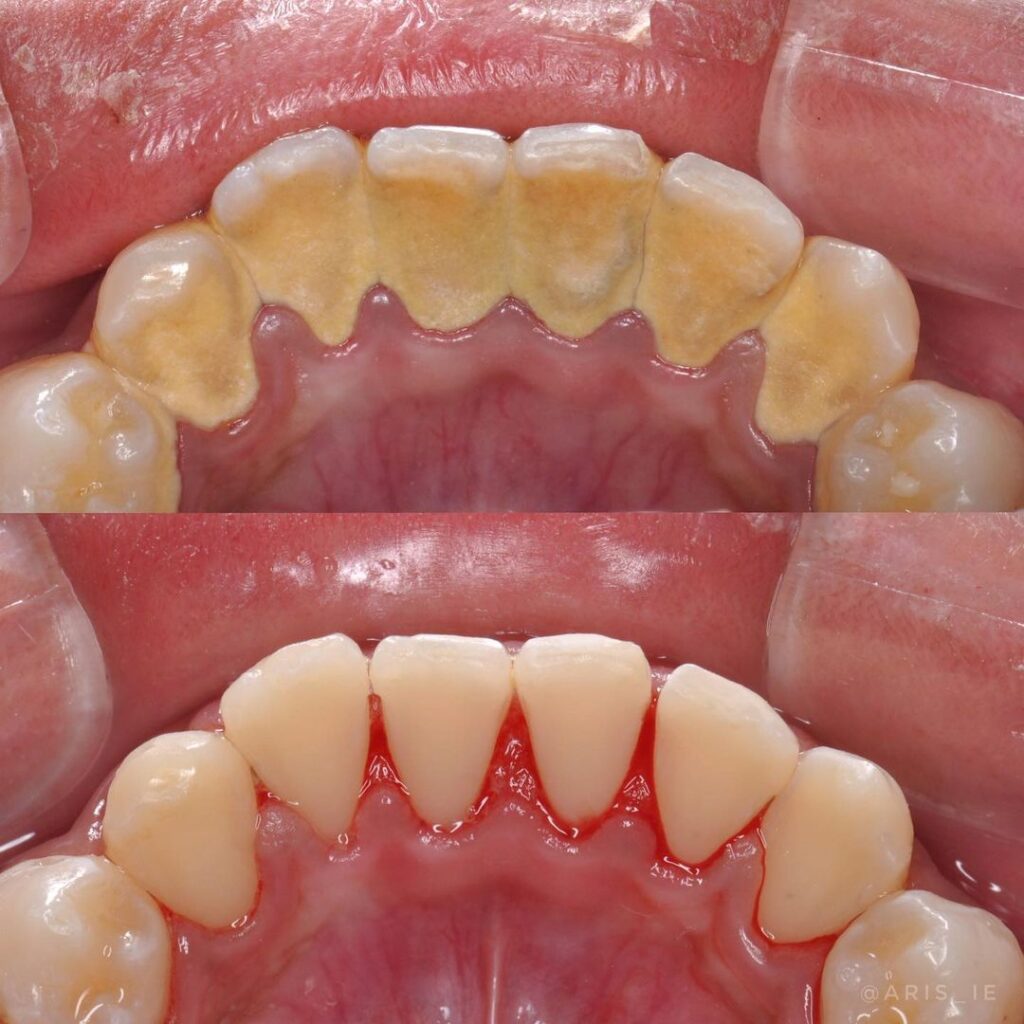
Possible Treatment for Calculus Bridge
Treating a calculus bridge, or tartar bridge, involves getting professional dental care to remove the built-up calculus and improve your oral health. Here are some options:
- Dental Cleaning: A dentist or dental hygienist will thoroughly clean your teeth, including scaling and root planing. Scaling means using special tools to remove the complex calculus from your teeth, while root planing smooths the tooth roots to prevent more buildup.
- Learning About Oral Hygiene: The dental professional will teach you how to care for your teeth, including brushing techniques and why regular flossing is important. This helps you avoid forming more calculus in the future.
- Follow-Up Visits: They might suggest regular checkups to monitor your oral health and ensure the calculus doesn’t return. Having dental cleanings every 3 to 6 months can stop more calculus from building up.
- Deep Cleaning (Periodontal Therapy): You might need deep cleaning procedures if the calculus has caused more severe gum disease. This means cleaning the gum pockets and tooth roots well to help your gums heal and avoid more damage.
- Using Antibiotics: For severe gum disease cases, your dentist might prescribe antibiotics or treatments that fight bacteria to control infections.
- Gum Surgery: If your gum disease is advanced, you might need surgery like gum flap or pocket reduction surgery. These procedures clean the area thoroughly and help your gums reattach to your teeth.
- Better Oral Care at Home: Following the advice from the dental pro about how to keep your mouth clean at home; brushing, flossing, and using mouthwash—can stop more calculus from forming.
Remember, stopping the problem before it starts is important. Regular dental visits and cleanings, along with taking good care of your teeth at home, can help you avoid having a calculus bridge and keep your oral health in good shape. If you think you have a calculus bridge or gum issue, it’s a good idea to talk to a dentist for the correct diagnosis and treatment advice.
READ ALSO: Finding Quality Dental Care in Rolla, Missouri: A Guide to Dentist Selection
How to Prevent Calculus Bridge from appearing on your teeth
Keeping your mouth healthy prevents plaque from turning into calculus. This includes:
- Proper Brushing: Brush your teeth at least twice a day for at least two minutes each time (30 seconds for each surface: top front, top back, bottom front, and bottom back). Use circular motions and tilt your brush at a 45-degree angle. Be gentle along the gumline. Change your toothbrush every two to three months. Electric toothbrushes work well.
- Daily Flossing: Once a day, use dental floss to clean between your teeth and remove any stuck food. Some people use pre-threaded flossers or water flossers.
- Healthy Habits: Quit smoking or using smokeless tobacco, as it can harm your oral health. If you drink alcohol, do so in moderation, as it can also affect your gums.
- Regular Checkups: It’s a good idea to have dental cleanings at least once or twice a year. If you have gum disease, you might need more frequent visits. The dentist will check for cavities or other issues.

Conclusion
Understanding and addressing the issue of calculus bridges is paramount for maintaining optimal oral health. The potential consequences of untreated calculus bridges, such as gum disease and other oral complications, underscore the importance of regular dental care and proper oral hygiene practices.
By emphasizing preventive measures like consistent brushing, flossing, and professional dental cleanings, individuals can significantly reduce the risk of calculus bridge formation and its associated problems.
Remember, a proactive approach to oral health not only prevents the discomfort of dental issues but also contributes to a confident and radiant smile. So, take charge of your oral hygiene journey and ensure the longevity of your dental well-being.
READ ALSO: what to do after wisdom teeth removal
FAQs
Is it painful to remove tartar?
Tartar removal may or may not be painful and depends on several factors. If you have sensitive teeth or diseases like gingivitis or periodontitis, removing tartar will be somewhat painful.
What does a bridge do to your teeth?
Dental calculus, commonly known as tartar, affects most adults and tends to worsen with age. When not properly removed, it can progress into a calculus bridge, which increases your risk of developing severe gum infections, disease or permanent bone loss around the teeth.
Is calculus worse than plaque?
The calcified plaque is hard to remove, usually requiring a dentist or hygienist to remove it with a procedure known as deep cleaning. When it comes to calculus vs plaque, calculus is more virulent and leads to decay and severe periodontal problems.
Do gums grow back after calculus removal?
The simple answer is no. If your gums are damaged by, for example, periodontitis, the most severe form of gum disease, it’s not possible for receding gums to grow back.
Does calculus cause bad breath?
It is present on teeth, dentures, and restorations. It causes halitosis (bad breath) and makes teeth (prosthesis) vulnerable to decay and extractions. Treatment of dental calculus involves scaling, followed by oral hygiene reinforcement.



